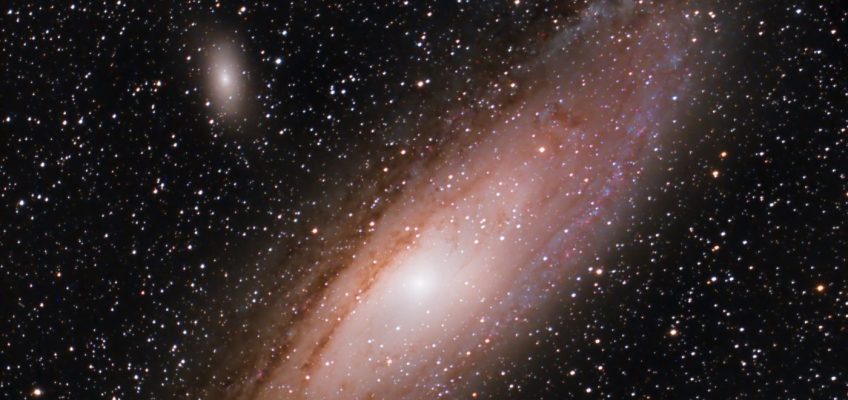Throughout the ages crows have been getting a bad rap. Along with being considered big, black, ugly and stupid, their singing is anything but beautiful. I’m sure you’ve heard the old expression about someone eating crow, meaning they were proved wrong and humiliated. Truthfully, crows are one of the smartest birds around. In fact, according to Greek and Roman mythology, crows were once the most respected birds on Earth. Back then, they were highly exalted and intelligent and possessed glorious voices that delighted all. They also had bright white feathers with gold trim on their wings and tails. Crows served the gods and goddesses as reliable messengers on Mount Olympus with great distinction until Corvus, the bungling, dishonest crow, messed it up for all crows forever.
That’s one of the myths of the springtime constellation Corvus the Crow. Like many spring constellations, it’s not all that big and not all that bright, but it is distinctive. Look for a lopsided trapezoid in the low south-southeastern sky that pops out as soon as it’s dark enough this time of year. How that lopsided trapezoid is supposed to be a crow is certainly beyond me, but it has a heck of a story.
Apollo, the god of the sun, sent Corvus the crow on a quick but important mission to fetch water from a nearby, ultra-clear spring. Apollo sent off Corvus with one of his favorite king-sized chalices. That’s how much he cherished this spring water. Corvus didn’t know exactly where the spring was, and being a male crow, he was too stubborn to ask for directions.
Finally, in the mid-afternoon during the heat of the day, he arrived at the spring. Corvus was so hot and his throat so dry that he immediately plunged himself in the spring and had to get his fill of the precious water. He was about to begin filling up Apollo’s giant chalice when he saw a nearby fig tree loaded with fresh fruit. He rocketed to the tree and set the chalice down. The fruit was amazing. He told Apollo that he’d be back by suppertime, but he couldn’t stop eating the fruit. It was that good! Before he knew it was almost sunset, and there was no way he’d make it back to Apollo until the middle of the night.
Corvus was in a tight spot. He had to come up with a good excuse, hook or crook, for getting back home so late. His wheels were turning. Just after he filled Apollo’s giant chalice, he saw a water snake swimming close by. He quickly plucked it out of the water and that innocent snake was his scapegoat. With chalice clutched by one talon and the snake by the other, he put it into overdrive and flew home as fast as he could.
As he got closer to Mount Olympus, Corvus could see Apollo standing out on the edge of a cliff. From half a mile away, he could already see Apollo’s glare. When Corvus made his landing, he explained to Apollo that the water snake he captured tried to keep him from filling the chalice and he had to fight him off for hours.
Apollo was having none of this. He went on a rampage and fired Corvus on the spot. He didn’t stop there, though. Apollo banned all crows from Mount Olympus and used his magical godly powers to transform all crows from their beautiful white and gold colors to the jet black we see today. Continuing his tantrum, he waved his finger in anger once again and collectively turned all the crows’ beautiful singing voices into the caw caw we hear today. To top it off, Apollo flung Corvus, the chalice and the water snake in the sky to become the constellations we still see in the spring.
(Mike Lynch)
The lopsided trapezoid that makes up the constellation Corvus is easy to find but nearby Crater the Chalice and Hydra the Snake are much tougher to spot and are definitely deep-track constellations.
Celestial happenings this week
There’s a newly discovered faint comet available in the very early morning twilight. Comet SWAN may be visible in the very low northeastern sky just before morning twilight begins, around 4:30 to 5 a.m. It may be visible to the naked eye as a fuzzy star with a short tail, although you’ll probably need binoculars or a small telescope to spot it. Morning twilight will eventually wash it out. There are predictions that it’ll be much brighter toward the first part of May when it’s visible in the early evening sky, but I certainly wouldn’t take that to the bank.
Mike Lynch is an amateur astronomer and retired broadcast meteorologist for WCCO Radio in Minneapolis/St. Paul. He is the author of “Stars: a Month by Month Tour of the Constellations,” published by Adventure Publications and available at bookstores and adventurepublications.net. Mike is available for private star parties. You can contact him at mikewlynch@comcast.net.
Related Articles
Skywatch: The two brightest stars, and a guest star
Skywatch: Celestial twins proudly sharing Orion’s shoulders
Skywatch: Out with the hunter. In with the Lion.
Skywatch: Your universe through binoculars
Skywatch: Last chance to catch the little ram


Leave a Reply